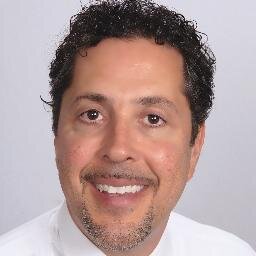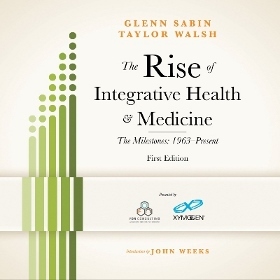Bravo! How to End a Speech Vividly and Memorably

In my first article in this three-part series about speaking on integrative medicine, I discussed incorporating mindfulness in your talks, presentations, videos and podcasts. The second piece in the series offered some foolproof ways to grab an audience’s attention in your Introduction.
Today, I’d like to talk about the other end of your remarks: your Conclusion, and why you need a clincher to keep your listeners and viewers thinking about what you’ve said. Even more important, of course, is the need to activate them in the days, weeks, and months ahead.
(For more suggestions about becoming this type of influential speaker, download my cheat sheet, “4 Characteristics of an Influential Speaker.”)
Engaging and Inspiring Your Listeners
To truly engage listeners and to get them to retain key information, your beginning and ending need to be particularly strong. The reason has to do with the concepts of primacy and recency.
Primacy means that audiences will remember most vividly what they experience at the start of your talk; and recency states that they’ll also remember what you say at the end. With regard to public speaking, of course, this means your Introduction and Conclusion.
Speakers throughout history have understood the importance of a strong beginning and ending. Even today, the smart presenter speaking in the integrative medicine space spends the time and attention necessary to craft a “hook” or “grabber” that immediately and powerfully gets an audience onboard.
Last time around, I listed a dozen openings you can use to get an audience on your wavelength immediately. These openings are actually rhetorical devices custom-made to work in speeches and presentations, as they have for millennia. Here they are again:
• Question
• Story
• Quotation
• Visual
• Statistic or other data
• Startling statement
• Personal anecdote or experience
• Humor
• Expert opinion
• Catchy fact
• Today’s headline or news event
• Testimony or success story
A Word or Two Before You Go
Let’s say you’ve launched your speech powerfully using one of these approaches, and you’ve kept everyone’s attention as you developed your message. Now you’re ready for the “other” critically important segment of your presentation: your Conclusion.
Remember: recency states that listeners will likely retain the last thing you say. So you don’t want to end weakly, with your presentation abruptly spiraling to earth like a leaking balloon. “Quit while you’re ahead,” and “Always leave ’em laughing,” are two well-known sayings that embody the principle that a speech should end as strongly as it begins.
Now, think about the Conclusions to all the speeches and presentations you’ve listened to over the past year. How many of them were memorable? How many of them even had a conclusion?
One of the most common public speaking shortcomings, in fact, is the lack of a memorable closing that drives home the speaker’s message. For audience members, this can feel like being on the receiving end of a shaggy dog story. Or to put it another way: a speech without a conclusion leaves listeners hungry for a last satisfying mouthful of your presentation’s key ingredient.
Why would you want to leave your audience without dessert?
Just as you grabbed listeners’ attention at the start of your speech, you must ensure that your Conclusion is memorable, and that it vividly re-focuses your auditors on your core message.
Enjoying this article? Subscribe and get our latest, delivered straight to your inbox.
As with your Introduction, a solid Conclusion takes thought and sometimes a dash of creativity. But here’s some good news: The same list of a dozen “springboard devices” mentioned above as openers can be used to conclude your speech! The goal is identical: for you to be sufficiently dramatic, provocative, or humorous so that your message will stick in the listeners’ minds afterwards. In addition to those devices already given, here is a “Triple-T” combination of powerful clinchers that can help make your Conclusion productively sticky:
• Thesis-Antithesis
• Triad (any group of three)
• Tribute
Feel Free to Bring in the Experts
A witticism from Oscar Wilde or Mark Twain, or a quotation from Mother Teresa or Mahatma Gandhi, can do wonders. As you’ll just have noticed, I suggest looking outside integrative healthcare to find a connection that’s unexpected by your listeners and therefore invigorating.
Whatever you choose as a closing device make it vivid and memorable. For as that renowned scientist Yogi Berra said: “It ain’t over till it’s over.”
Take a look at these examples of three outstanding Conclusions that use the devices named above:
• John F. Kennedy, Inaugural Address: “And so, my fellow Americans: ask not what your country can do for you—ask what you can do for your country. My fellow citizens of the world: ask not what America will do for you, but what together we can do for the freedom of man.” (Thesis-Antithesis)
• Abraham Lincoln, Gettysburg Address: “It is rather for us to be here dedicated to the great task remaining before us: that from these honored dead we take increased devotion to that cause for which they gave the last full measure of devotion—that we here highly resolve that these dead shall not have died in vain—that this nation, under God, shall have a new birth of freedom—and that government of the people, by the people, for the people, shall not perish from the earth.” (Triad)
• Ladybird Johnson’s 1964 speech on Eleanor Roosevelt: “Let us today earnestly resolve to build the true foundation for Eleanor Roosevelt‘s memory—to pluck out prejudice from our lives, to remove fear and hate where it exists, and to create a world unafraid to work out its destiny in peace. Eleanor Roosevelt has already made her own splendid and incomparable contribution to that foundation. Let us go and do likewise, within the measure of our faith and the limits of our ability. Let Eleanor Roosevelt teach us all how to turn the arts of compassion into the victories of democracy.” (Tribute)
And you noticed as well the triad in that last example, didn’t you?
 Gary Genard, PhD, is the creator of The Genard Method of performance-based public speaking training. An actor, communications professor, and speech coach, he uses theater-based techniques to help professionals become extraordinary speakers. His blog Speak for Success! covers all aspects of speaking for leadership. He is the author of How to Give a Speech, and Fearless Speaking: Beat Your Anxiety, Build Your Confidence, Change Your Life. Dr. Genard was listed as No. 25 on Global Gurus’ World’s Top 30 Communication Professionals for 2015. This is the third in a series of three blogs he has contributed in this space. The first article discussed speaking with mindfulness. The second piece listed some foolproof ways to grab your audience’s attention and engagement so they’ll listen to everything that follows.
Gary Genard, PhD, is the creator of The Genard Method of performance-based public speaking training. An actor, communications professor, and speech coach, he uses theater-based techniques to help professionals become extraordinary speakers. His blog Speak for Success! covers all aspects of speaking for leadership. He is the author of How to Give a Speech, and Fearless Speaking: Beat Your Anxiety, Build Your Confidence, Change Your Life. Dr. Genard was listed as No. 25 on Global Gurus’ World’s Top 30 Communication Professionals for 2015. This is the third in a series of three blogs he has contributed in this space. The first article discussed speaking with mindfulness. The second piece listed some foolproof ways to grab your audience’s attention and engagement so they’ll listen to everything that follows.

Read Glenn’s story.

